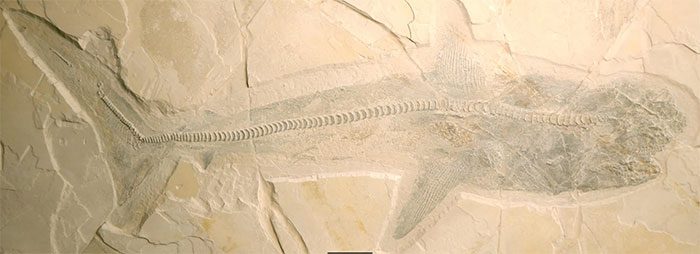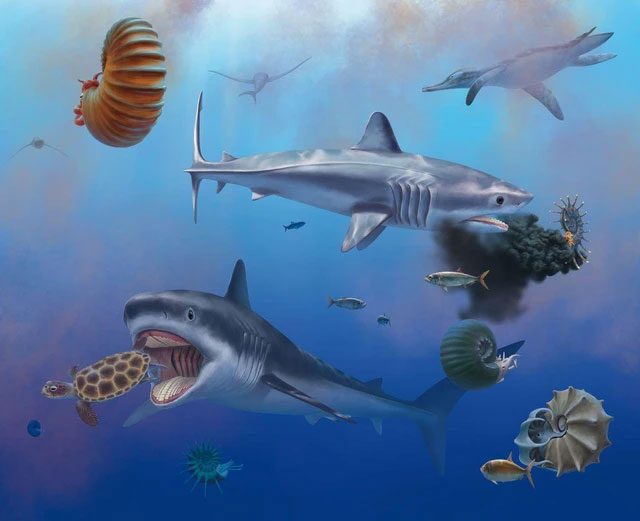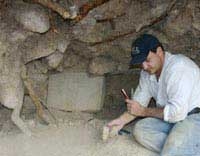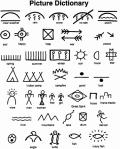The giant white sharks of today are far less dangerous than the recently unearthed monstrous ancestor.
The almost completely intact fossil of a 76-million-year-old marine monster discovered in a limestone quarry in Nuevo León, northeastern Mexico, provides a chilling glimpse into what once lived alongside dinosaurs on a “monster Earth” during the Cretaceous period.
This species has been identified as an extinct shark from the genus Ptychodus, which was far more terrifying than any existing shark today.

The Cretaceous marine monster is a giant shark – (Photo: Proceedings of the Royal Society B: Biological Sciences).
The lead author, Romain Vullo, a researcher at Géosciences Rennes (France), told Live Science via email: “The discovery of complete Ptychodus specimens is truly exciting because it addresses one of the most prominent mysteries of vertebrate paleontology.”
Sharks from the genus Ptychodus were first discovered in the mid-18th century. Descriptions of this genus are primarily based on their teeth, which can measure nearly 55 cm long and 45 cm wide, found in various Cretaceous marine sediments.
The marine monster unearthed in Mexico provides the first full “portrait” of these creatures.
It shows a body length of up to 10 meters, preserved in a pose as if swimming in ancient rock.

Graphic depiction of the extinct marine monster in Mexico – (Photo: Proceedings of the Royal Society B: Biological Sciences).
The Ptychodus sharks are closely related to today’s giant white sharks, but this fossil indicates that their ancestor was a far more formidable predator than its modern descendants.
Most notably, this species had layered teeth adapted to feed on hard-shelled animals.
Their favorite prey included large extinct sea turtles and other hard-shelled creatures.
Ptychodus occupied a unique ecological niche in the late Cretaceous seas because it was the only shark species adapted to feed on hard-shelled prey like turtles.
This may explain why it went extinct about 10 million years before the mass extinction event caused by the Chicxulub meteor, which marked the end of the Cretaceous period.
According to the authors, by the end of the Cretaceous, this super shark may have had to compete for its favorite hard-shelled prey with the mosasaurs, a group of gigantic marine reptiles that reached their peak during this time, with many species larger than Ptychodus.





















































